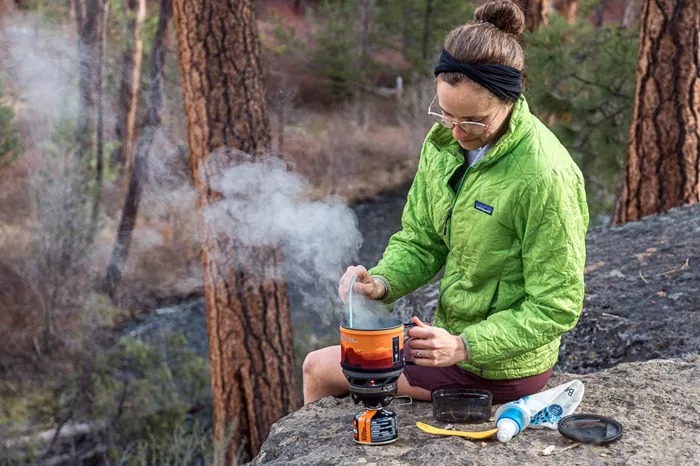When planning a backpacking trip, one of the most common questions is: “How much fuel should I bring?” The answer isn’t as simple as you might think. Fuel needs depend on several factors that every camper should understand before hitting the trail.
Backpacking stoves typically use three main fuel types:
- Canister fuel (isobutane/propane mixes)
- Liquid fuel (white gas, kerosene, or diesel)
- Alcohol or solid fuel tablets
Each fuel type burns differently and has unique advantages. Canister fuels are convenient but hard to gauge remaining quantity. Liquid fuels perform better in cold weather but require priming. Alcohol burns cleanly but provides less heat output.
Calculating Your Personal Fuel Needs
Fuel consumption varies by individual cooking habits. Ask yourself these key questions:
- How many people are in your group?
- How many meals will you cook each day?
- Do you need boiling water for drinks or rehydrated meals?
- What’s your typical cooking time per meal?
- Will you face extreme cold or high altitude?
A good starting point is the standard measurement: 1 ounce (30ml) of fuel per person per day. But this is just a baseline – your actual needs may differ.
Fuel Consumption by Stove Type
Different stove designs have varying fuel efficiency:
Canister stoves:
- Average burn time: 60-90 minutes per 8oz canister
- Typical output: 7,000-10,000 BTU/hour
- Best for: Short trips, moderate weather
Liquid fuel stoves:
- Average burn time: 1.5-2 hours per liter
- Typical output: 9,000-12,000 BTU/hour
- Best for: Cold weather, long expeditions
Alcohol stoves:
- Average burn time: 8-12 minutes per ounce
- Typical output: 1,500-2,500 BTU/hour
- Best for: Ultralight backpacking, warm weather
Environmental Factors Affecting Fuel Use
Your fuel needs change with these conditions:
Temperature: Below freezing? Add 25-50% more fuel. Canister fuels lose pressure in cold.
Altitude: Higher elevations require longer boiling times. Add 10% fuel per 1,000 feet above 5,000ft.
Wind: Using windscreens can save up to 30% fuel. Never use them with canister stoves though – risk of explosion!
Water source: Melting snow consumes 2-3 times more fuel than boiling liquid water.
Practical Fuel Calculation Examples
Let’s break down some real-world scenarios:
Solo 3-day trip (moderate conditions):
- 2 hot meals/day + morning coffee
- Estimated: 1.5oz fuel/day × 3 days = 4.5oz
- Bring: 8oz canister (smallest available size)
Group of 4 (5-day winter expedition):
- 3 hot meals/day + hot drinks
- Base need: 4oz/person/day × 4 people × 5 days = 80oz
- Winter adjustment: +50% = 120oz total
- Bring: Two 1-liter white gas bottles
Fuel-Saving Tips for Backpackers
Smart practices can extend your fuel supply:
- Use insulated cookware to retain heat
- Soak dehydrated meals before heating
- Cook one-pot meals instead of multiple dishes
- Turn off stove immediately after cooking
- Use lid on pots – boils water 20% faster
- Choose efficient meal plans (less cooking time)
Measuring and Packing Your Fuel
For canister users:
- Weigh new canisters (marked on bottom)
- Shake to estimate remaining fuel
- Pack partially used canisters upright
For liquid fuel:
- Use marked bottles or graduated containers
- Bring 10-20% extra as safety margin
- Store away from food to prevent contamination
Alcohol users:
- Carry in leakproof bottles
- 1oz per meal is good estimate
- Mark bottles clearly to avoid drinking mistakes
Emergency Fuel Planning
Always prepare for the unexpected:
- Pack 1 extra day’s worth of fuel
- Know natural fire sources (where permitted)
- Consider backup cooking options (cold soaking, solar)
- Have emergency water purification methods
Testing Your Fuel Needs Before You Go
Don’t guess – test! Before big trips:
- Time how long to boil 2 cups water at home
- Measure fuel used during test
- Multiply by expected meals on trail
- Add 20% safety buffer
Example test:
- Boiling 2 cups takes 4 minutes, uses 0.2oz fuel
- Planning 10 boils = 2oz calculated need
- Add buffer = 2.4oz total to pack
Fuel Comparison Chart
- Canister Medium Poor Easiest Short trips
- Liquid High Excellent Moderate Winter camping
- Alcohol Lightest Fair Challenging Ultralight packers
Final Fuel Packing Recommendations
After thousands of trail miles, here’s my golden rule:
- Summer conditions: 0.8-1oz/person/day
- Shoulder seasons: 1-1.2oz/person/day
- Winter camping: 1.5-2oz/person/day
Conclusion
Remember: It’s better to have a little extra than run out completely. With experience, you’ll dial in your perfect fuel amount for any adventure.
Happy trails and safe cooking! Always practice Leave No Trace principles with your stove use.
Related topics:
How Much Backpacking Stove Fuel Do You Need?
How Much Fuel for a Backpacking Stove
Best Lightweight Camping Stove: A Comprehensive Guide

